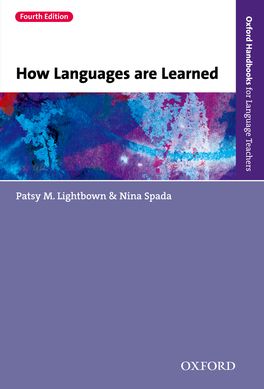How Languages are Learned

How Languages are Learned
|
ISBN: |
9780194541268 |
|
Binding: |
Paperback |
|
Published: |
7 Feb 2013 |
|
Availability: |
9
|
|
Series: |
$72.95 AUD
$84.99 NZD
Add To Cart Request an inspection copyDescription
Written by experienced teacher trainers and language learning experts, Patsy Lightbown and Nina Spada, How Languages Are Learned relates the theories of first and second language acquisition to what actually goes on in the classroom. It uses activities to explore the practical implications of the ideas presented. Evaluations and case studies are included throughout the book so that you can see a practical context for the research ideas you are reading about. Many of these examples are taken directly from real second language classrooms.
Now in its 4th edition, How Languages Are Learned is highly valued for the way it relates language acquisition theory to classroom teaching and learning and draws practical implications from research for the language classroom. It is widely used as a reference book on teacher training courses, and is for new and experienced practising teachers.
New to This Edition:
- Updated to reflect the most recent research in the field of second language teaching and learning
- Activities and Questions for Reflection personalise content and support critical thinking
- Extra activities, study questions and videos available online
- Now also available as an eBook from Amazon, Kobo and iBookstore
Contents
Authors
Nina Spada, Professor in the Second Language Education Program at OISE, University of Toronto
Lecturer Resources
New resources to complement How Languages are Learned are available at www.oup.com/elt/teacher/hlal:
- Sample material from the fourth edition, including new 'Questions for Reflection'
- Discussion Questions organised per chapter
- Supplementary Activities for teachers
- Editable chapter summaries
- Weblinks to related content on other websites
For more information about the resources for How Languages are Learned, please contact your Oxford Territory Manager.